《NEIGHBORHOOD LAW FIRMS FOR THE POOR:A COMPARATIVE STUDY OF RECENT DEVELOPMENTS IN LEGAL AID AND IN T》
| 作者 | BRYANT GARTH 编者 |
|---|---|
| 出版 | SIJTHOFF & NOORDHOFF |
| 参考页数 | 260 |
| 出版时间 | 1980(求助前请核对) 目录预览 |
| ISBN号 | 9028601805 — 求助条款 |
| PDF编号 | 813699008(仅供预览,未存储实际文件) |
| 求助格式 | 扫描PDF(若分多册发行,每次仅能受理1册) |

Part One The "Unmet Need" for Legal Services: Justifying Neighborhood Law Firms1
Chapter 1. Studies of Legal Needs and the Justification for Neighborhood Law Firms3
Ⅰ. From Equal Opportunity to Legal Need3
Ⅱ. The Legal Needs of the Poor: A Diagnosis and a Remedy4
Ⅲ. Another Diagnosis and an Expanded Cure8
Ⅳ. Some Problems with the Technical Solution9
Part Two The Establishment and Growth of Neighborhood Law Firms for the Poor: A Comparative Survey15
Chapter 2. The United States17
Ⅰ. Origins of the Neighborhood Law Firm Movement17
A. The U.S. Legal Aid Movement17
B. Legal Reform Through the Courts20
C. Legal Strategies and the Emergence of the War on Poverty21
D. The Role of the Bar in the Establishment and Early Operation of the OEO Legal Services Program26
Ⅱ. The OEO Legal Services Program is Implemented30
A. The NLF Model and the Expansion of the Program30
B. NLFs, Local Bars, and Governing Boards31
C. The OEO Legal Services Program, the National Bar, and Federal and State Governments36
D. The Legal Services Program—The Struggle for Independence38
Ⅲ. The Legal Services Corporation43
A. The Legal Services Corporation Act of 197443
B. Implementing the Legal Services Corporation Act45
Chapter 3. England and Wales52
Ⅰ. Origins of the NLF Idea in England and the Early Role of the Law Society53
Ⅱ. The North Kensington Neighbourhood Law Centre57
Ⅲ. The NLF Movement Expands and Gains Support61
Ⅳ. Implementing the NLF Model64
A. The Adoption of a Social Change Orientation64
B. Law Centers and Management Committees67
C. Law Centers' Relations with Local Government69
D. Law Centers' Relations with Local Solicitors70
E. Relations among Law Centers, the National Law Society, and the Lord Chancellor's Office—The Waivers Controversy72
F. Law Centers' Recurring Funding Difficulties76
Ⅴ. The Royal Commission on Legal Services: Unresolved Issues and the Future of Legal Aid in England and Wales77
Chapter 4. Canada85
Ⅰ. The Canadian Debate—Judicare vs. Decentralized Staff Legal Aid Systems85
Ⅱ. The Canadian Compromise—Provincial Reform and the NLF Model87
A. Nova Scotia88
B. Manitoba89
C. Quebec91
D. Saskatchewan93
E. British Columbia95
F. Ontario99
G. Alberta101
H. Newfoundland101
Ⅲ. Conclusion101
Chapter 5. Australia105
Ⅰ. Background to the Australian Legal Aid Office105
Ⅱ. The ALAO is Established107
Ⅲ. The ALAO and the Legal Profession108
Ⅳ. Efforts to Provide a Wider Range of NLF Services and a Statutory Basis for the Staff System109
A. The Legal Aid Review Committee110
B. The Commission of Inquiry into Poverty110
C. The Legal Aid Bill of 1975111
Ⅴ. The ALAO and State Legal Aid after the Fall of the Labour Government113
A. The Fate of the ALAO113
B. Reform at the State Level113
Ⅵ. Conclusion115
Chapter 6. The Netherlands, Belgium, and Norway118
Ⅰ. The Netherlands118
A. The "Law Shop" Movement and the Challenge to Judicare119
B. The Organized Bar's Response and a New Challenge121
C. The Current Situation and Future Prospects123
Ⅱ. Belgium125
Ⅲ. Norway127
Chapter 7. The Emergence and Development of the Neighborhood Law Firm as an Institution: A Comparative Conclusion130
Ⅰ. The Prime Movers131
Ⅱ. The Policy Makers133
Ⅲ . The Organized Bar and NLFs135
A. The Financial Interests of the Profession and Judicare136
B. The Bar and the Control of NLFs137
C. The Bar and NLF Activities138
D. The Importance of the Profession's Image139
Ⅳ. The Continuing NLF Movement140
Part Three The Strategies and Methods of Neighborhood Law Firms143
Chapter 8. Individual Services: Meeting the Legal Needs of the Poor145
Ⅰ. The Importance of Individual Casework145
Ⅱ. Eligibility Requirements and the Needs of the Poor146
Ⅲ. How the Need is Met in Practice: NLFs vs. Judicare (or Charitable) Legal Aid Systems147
Ⅳ. Approaches to Utilizing NLFs for Individual Cases159
A. The NLF Model by Itself159
B. Combining NLFs and Judicare160
C. Beyond Combining NLFs and Judicare—Meeting Legal Needs Without Lawyers162
Ⅴ. Going Beyond Individual Needs166
Chapter 9. Strategies for Helping the Poor as a Class—Meeting the Collective Needs of the Poor171
Ⅰ. Law Reform172
A. The Place of Law Reform in the NLF Movement172
B. Law Reform in the United States173
1. The Methods of Law Reform174
2. The Results of the Law Reform Strategy175
C. Law Reform in a Broader Perspective177
Ⅱ. Organizing and Aiding Community Groups179
A. Group Representation and Organization in the NLF Movement179
B. The Methods of Serving Groups184
1. Eligibility Standards for Groups184
2. The Importance of Paralegals as Community Workers184
3. Kinds of Group Work187
C. Problems with Group Work190
D. The Need for Group Work193
Ⅲ. Community Education194
A. Community Education in the United States and England195
B. The Purposes of Community Education196
C. The Need for Community Education197
Ⅳ. The Value of the Social Change Strategies198
Chapter 10. The Involvement of the Poor in NLF Policy Making at the Local Level203
Ⅰ. Methods for Providing for the Formal Participation of the Poor203
A. National or Provincial Control, Aided by Local Advisory Boards: Manitoba204
B. Regional Control, Aided by Local Advisory Boards:Quebec205
C. Local Control by Attorneys, Aided Sometimes by Local Advisory Boards: The United States206
D. Local Control by Predominantly Lay Boards:Saskatchewan and England209
Ⅱ. Community Participation and Control and the "Social Change" Strategies of NLFs212
Chapter 11. Types of Neighborhood Law Firms218
Ⅰ. The Legal Needs Model218
Ⅱ. The Professional Model219
Ⅲ. The Therapeutic Model220
Ⅳ. The Community Control Model221
Ⅴ. The Social-Reform-through-Groups Model221
Part Four Conclusion227
Chapter 12. Neighborhood Law Firms, the Legal Needs of the Poor, and Social Change228
Ⅰ. The Changing Professional Role of Lawyers228
Ⅱ. The Legal Profession as a Force for Social Change231
Ⅲ. Preserving and Extending the Best Qualities of NLFs232
Bibliography235
Index253
About the author259
1980《NEIGHBORHOOD LAW FIRMS FOR THE POOR:A COMPARATIVE STUDY OF RECENT DEVELOPMENTS IN LEGAL AID AND IN T》由于是年代较久的资料都绝版了,几乎不可能购买到实物。如果大家为了学习确实需要,可向博主求助其电子版PDF文件(由BRYANT GARTH 1980 SIJTHOFF & NOORDHOFF 出版的版本) 。对合法合规的求助,我会当即受理并将下载地址发送给你。
高度相关资料
-

- BROADCASTING LAW A COMPARATIVE STUDY
- 1993 CLARENDON PRESS·OXFORD
-

- PROGRAMS IN AID OF THE POOR SIXTH EDITION
- 1990年 THE JOHNS HOPKINS UNIVERSITY PRESS
-

- A CRIME IN THE NEIGHBORHOOD
- 1997 PENGUIN BOOKS
-
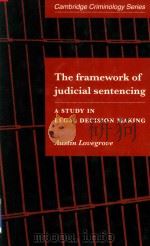
- The framework of Judicial sentencing A Study in Legal Decision Making
- 1997 Cambridge University Press
-

- In Search of Open Skies Law and Policy for a New Era in International Aviation a Comparative study o
- 1997 Kluwer Law International
-

- RECENT DEVELOPMENTS IN PSYCHOANALYSIS A CROTOCA; EVALUATION
- 1984 MCGRAW-HILL BOOK COMPANY
-
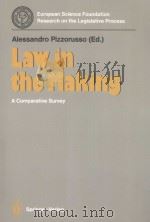
- LAW IN THE MAKING A COMPARATIVE SURVEY
- 1988 SPRINGER-VERLAG BERLIN HEIDELBERG
-
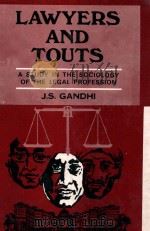
- LAWYERS AND TOUTS A STUDY IN THE SOCIOLOGY OF LEGAL PROFESSION
- 1982 HINDUSTAN PUBLISHING CORPORATION
-
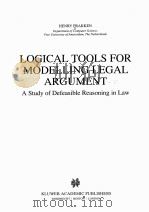
- LOGICAL TOOLS FOR MODELLING LEGAL ARGUMENT A STUDY OF DEFEASIBLE REASONING IN LAW
- 1997 KLUWER ACADEMIC PUBLISHERS
-
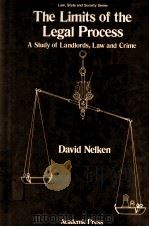
- THE LIMITS OF THE LEGAL PROCESS A STUDY OF LANDLORDS LAW AND CRIME
- 1983 ACADEMIC PRESS
-
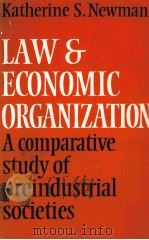
- LAW AND ECONOMIC ORGANIZATION A COMPARATIVE STUDY OF PREINDUSTRIAL SOCIETIES
- 1983 CAMBRIDGE UNIVERSITY PRESS
提示:百度云已更名为百度网盘(百度盘),天翼云盘、微盘下载地址……暂未提供。➥ PDF文字可复制化或转WORD



